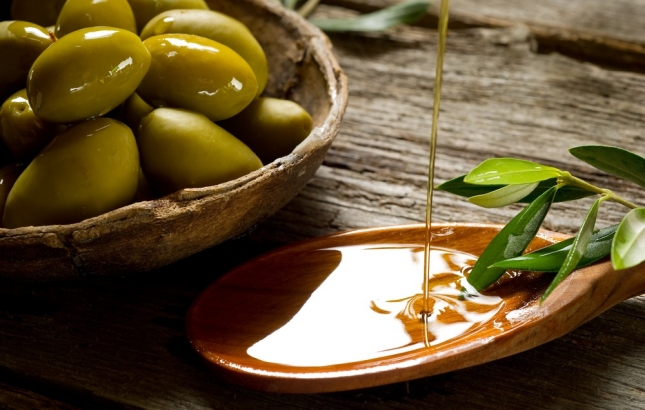
Breaking Down The Fat Family
The Fats. This nutritional ‘family’ isn’t exactly foreign to any of us, yet how well do we really know these guys, warts and all? Are they more goody-good Brady Bunch or bad-ass Sopranos? The fact is, they’re both good and bad and like any family, the Fats do share some common traits. For example, they all give your body energy and they all have 9 calories per gram. But (and I’m about to break all moral protocols about not having family favorites here…) some fats are just better than others.
The Fats. This nutritional ‘family’ isn’t exactly foreign to any of us, yet how well do we really know these guys, warts and all? Are they more goody-good Brady Bunch or bad-ass Sopranos? The fact is, they’re both good and bad and like any family, the Fats do share some common traits. For example, they all give your body energy and they all have 9 calories per gram. But (and I’m about to break all moral protocols about not having family favorites here…) some fats are just better than others.
Recent posts by Renée Leonard-Stainton
Although much attention has been focused on the need to reduce dietary fat, the body does need fat. Throughout life, it’s essential to provide energy and support growth. Fats are also needed for helping us absorb essential nutrients like vitamins A, D, E, and K; as well as for maintaining healthy skin and body functions, including immunity and brain development. Fat is also our most concentrated source of energy, and helps to keep us warm and protect our organs.
Among other health concerns, excessive fat intake is a major causative factor in obesity, high blood pressure, heart disease and colon cancer. To understand how fat intake is related to these health problems, it is necessary to understand the different types of fats available and the ways in which these fats act within the body.
Firstly, fats are composed of building blocks called fatty acids. There are three major categories of fatty acids – saturated, polyunsaturated, and monounsaturated. These classifications are based on the number of hydrogen atoms in the chemical structure of a given molecule of fatty acid. Keep reading – that’s as chemistry laden as it’s going to get.
Meet Monounsaturated Fat
Who/What: Monounsaturated fat is a type of unsaturated fat, and is typically liquid at room temperature. The most common monounsaturated fat in our diets is oleic acid, otherwise known as Omega-9.
Where: It’s found in olives, olive oil, canola oil, nuts and avocados.
How: The Mediterranean diet is high in mono fats and this has been linked to low blood pressure and lower incidences of heart disease – mono fats have been shown to help to reduce levels of unhealthy cholesterol. It also appears to reduce blood levels of the ‘bad’ cholesterol, low-density lipoprotein (LDL) without affecting the ‘good’ cholesterol, high-density lipoprotein (HDL) levels in any way. Often termed ‘the healthy fats’.
Meet Saturated Fat
Who/What: This kind of fat is usually hard at room temperature. Although saturated fats are often thought of as a group, there are different saturated fats, and each has different uses in the body and potentially different health effects. There is some evidence for positive effects of some saturated fats, including antibacterial properties (eg, coconut oil)
Where: Primarily found in animal foods such as meat and dairy – particularly cheese, butter, cream, and full-fat milk. Also found in some vegetable products including vegetable shortening, palm and coconut oils. The liver uses saturated fats to manufacture cholesterol. Therefore, excessive dietary intake of saturated fats can significantly raise the blood cholesterol level, especially the level of ‘bad’ LDL.
How: The liver uses saturated fats to manufacture cholesterol. Therefore, excessive dietary intake of saturated fats can significantly raise the blood cholesterol level, especially the level of ‘bad’ LDL which can in turn increase the risk of heart disease. It is recommended that less than seven percent of your daily calories should come from saturated fats. Cut down on cream, fatty cheese, cakes and biscuits, trim fat off meat and take the skin off chicken.
Meet Polyunsaturated Fat
Who/What: Unlike the saturated fats, polyunsaturates may actually lower your total blood cholesterol level. Poly fats are know as ‘essential fats’, quite simply because they are essential for our health. Our bodies can’t produce them, so we need to get them from our diets. The two types are omega-3 and omega-6
Where: Omega-6 is found in vegetable oils including sunflower, safflower, nuts, seeds, meat and chicken. Omega-3 is in flaxseed and canola oils, nuts, green vegetables, and oily fish such as sardines, mackerel, salmon and fresh tuna. Supplementation with flaxseed oil or fish oil capsules is common.
How: Essential fats can help reduce the LDL cholesterol in your blood, helping to protect against heart disease. Omega-3 helps our brains and eyes function well, while omega-6 helps with growth, immunity, healthy skin as well as our reproductive system
Meet Trans-Fats
Who/What: These fats occur when polyunsaturated oils are altered through hydrogenation, a process used to harden liquid vegetable oils into solid foods like margarine and shortening. Hydrogenation changes the structure of natural essential fatty acids to unnatural configurations.
Where: Many processed foods such as biscuits and cakes, meat pies and pastries. Most margarines contain trans-fats, although a lot of manufacturers changed their formulations in recent years due to negative press around trans-fats.
How: Studies show that trans-fats can raise LDL cholesterol levels, while simultaneously reducing HDL cholesterol levels. Double-bad! They can interfere with the body’s ability to utilize essential fatty acids.
So, there you have it. The Fats. Hopefully you’ve gained a little more knowledge about just what sort of fats you may be serving up at your next family dinner. Oh, and my favourite family members? Polyunsaturated and Monounsaturated all the way.
Live well, live long, live naturally
Renée x




Hello there Dear Renee,
I’m an Ayurvedic pactitioner from Kerala, India.
Your intentions and ideas regarding a life in the most natural way and spreading of the message is quite worthy enough to be praised.
Pls do go in and read something about Ayurveda, the ancient science that is developed in India, say 5000 years back and still staying as the best alternative medicine around the globe. But most of all the credits it owns…….. people less realize of its importance as a science of lilfe as it is explained meticulously in its texts which would be definitely interesting and a matter to research for a person like U…..
Regards and best wishes in your ventures,
Dr. Rajesh.
Thank you so much for this post. I have always been confused about all the 'fats' but you have sorted it all out for me :)
Hi Andrea :)
That's great - I'm glad I cleared it up for you! It can definitely get confusing, but once you've got it sussed, you are so much more aware of your choices x